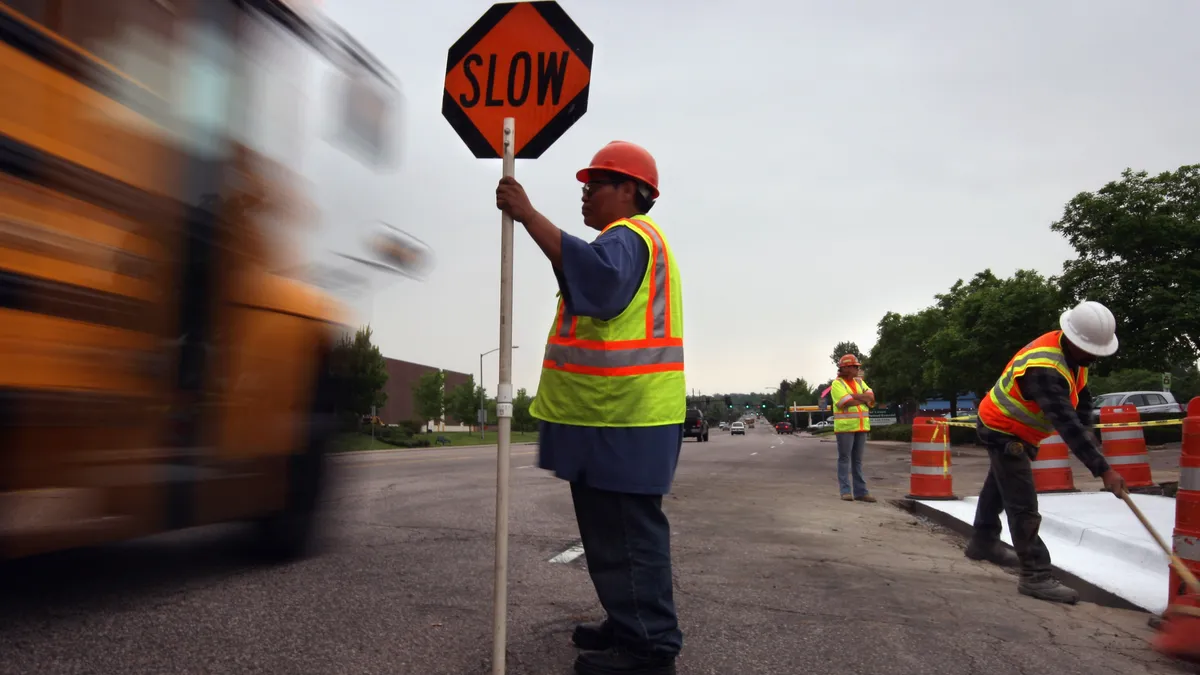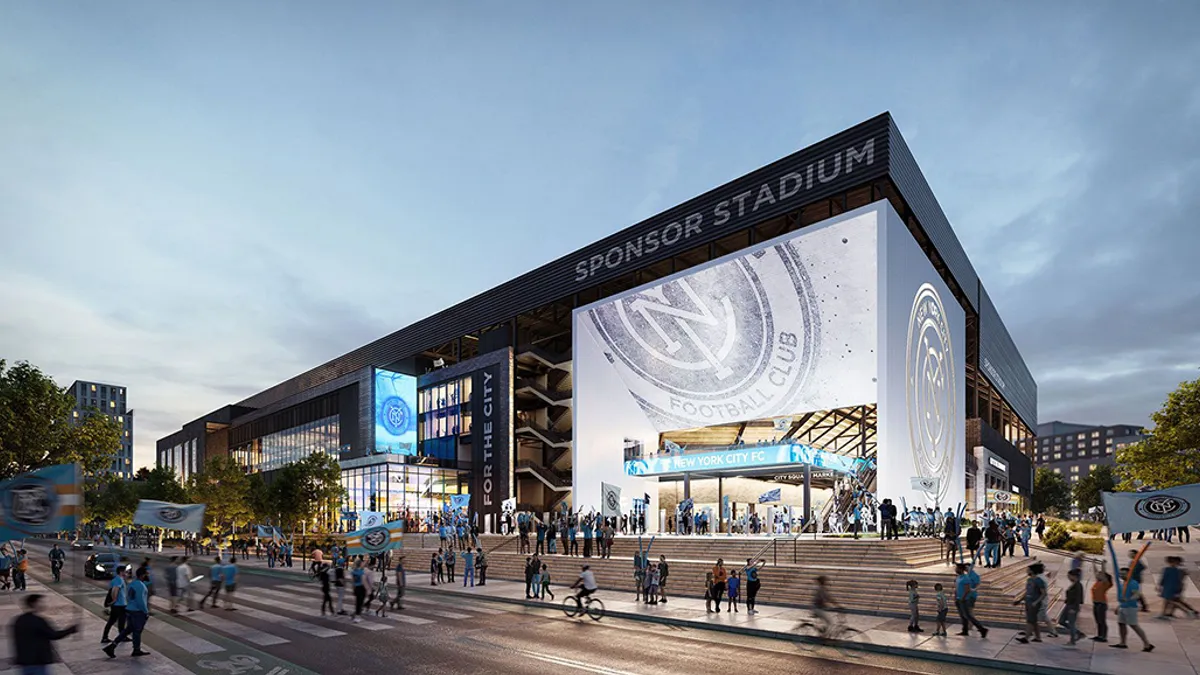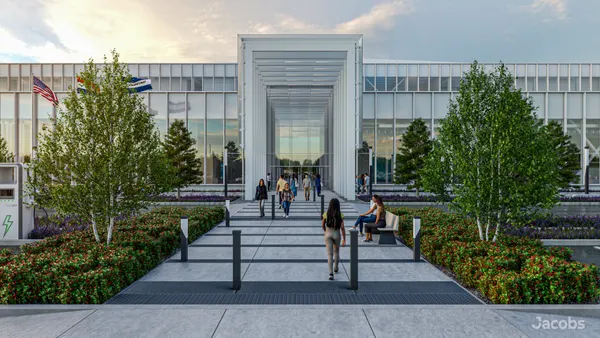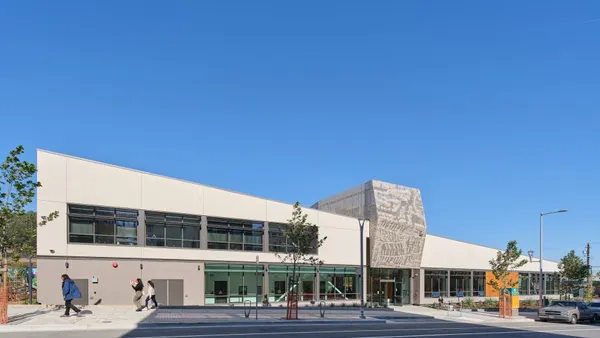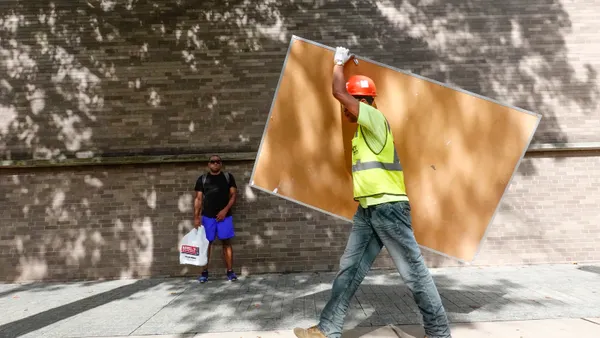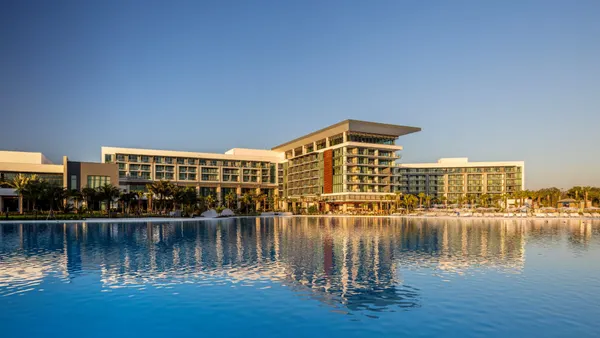The following is from Mark Ludewig, vice president of safety for North Canton, Ohio-based traffic management services firm Area Wide Protective. Opinions are the author’s own.
Road work zones are hazardous.
Workers and flaggers who build and protect our roadways are not the only ones at risk. Many motorists and pedestrians also die in accidents involving temporary work zones each year.
With speed limits creeping upward in many states, more tractor trailers on the road than ever, increasing congestion in urban centers and the worrying trend of distracted driving, construction pros and protectors have a dangerous job that is only growing more hazardous.

The Bureau of Labor Statistics reports that from 2011 to 2020, transportation events accounted for 73% of worker deaths that occurred at road construction sites during that period. In 63% of these events, the worker was struck by a vehicle, with 371 of 577 workers being struck by a forward-moving vehicle.
Risks are ever-present in highway work zones and are increasing. Keep reading to learn the three essential parts of an effective highway work zone safety strategy.
Part 1: Setup
Set up work zones in a way that maximizes protection for highway workers. Always start by considering the ones who are at the greatest risk for injury. The extra care can go a long way to making workers feel protected while performing their duties.
Complete work at night whenever possible to minimize traffic volume and daytime distractions. Clear, effective communication with jobsite team members is also made easier by the reduction in noise. Staff more workers for work zones spanning larger areas; consider utilizing more-experienced personnel such as former police officers, security guards and emergency responders who instinctively apply safety training to everything they do.
Work closely with local law enforcement to secure the site. Law enforcement raises overall alertness to the work zone and helps reduce speeding among other dangerous driving behaviors. Working with law enforcement agencies early in the planning process can also identify any project-specific concerns or needs.
Use the proper safety equipment, including truck-mounted attenuators (TMA), arrow boards and signs/message boards. Trucks that use TMAs are built to meet all work zone safety requirements and are intended to absorb the impact of a high-speed crash, often decreasing damage to the vehicle and saving workers’ lives.
Arrow boards should be placed on the shoulder at the beginning of the merging taper or, where there is no shoulder, in the closed lane behind the channeling devices. One arrow board should be used for each travel lane closed and should not encroach into any part of the usable traffic space. All signs or message boards must be clean and legible, in good working order and retroreflective to make them visible day and night.
Part 2: Training
Ensure team members are properly trained and follow necessary safety protocols. This simple step helps to eradicate fatalities and life-altering injuries that result from a vehicle entering the work zone. It also eliminates at-risk behaviors that could result in a vehicle accessing the work zone.
Complete a pre-job safety briefing led by the site supervisor, including preparation of an escape route and practice. This can also identify hazards in proximity to the work zone (e.g., obstructions to visibility, commercial activity, animals and insects, etc.). A briefing should be completed at the beginning of every job and a new briefing is required if the work assignment or environmental conditions change, if there are changes in personnel, or as additional hazards are recognized.
Onsite workers and protectors should always remain vigilant and alert to recognize dangerous traffic situations. Personnel should be trained — and continually reminded — to always wear appropriate visual/audio traffic control PPE for the particular assignment, never turn their back on traffic, check their position for one or more routes of escape to avoid being injured by a reckless vehicle and protect themselves first — then use a storm whistle to alert others to the danger.
Jobsites should also have a qualified observer to monitor changing traffic conditions and warn coworkers of potential dangers. An observer is critical to protecting workers who are setting up temporary traffic control devices or who may be removing devices or debris from the roadway.
Part 3: Stopping work
Know when to stop work. The safety of people is more important than any project deadline. Workers should stop work immediately if the necessary resources are not present and/or available, such as a lack of personnel, insufficient number of traffic control devices or improper or malfunctioning equipment. Workers should also stop work immediately if a vehicle enters the work zone, the worker cannot safely perform their task for any reason or the worker perceives any condition that poses imminent danger to people, equipment or the environment.
Following a stop work event, it is important to ensure the well-being of affected employees and to notify management of record in accordance with agreed to incident reporting procedures.
Properly planned and staffed highway work zones help to minimize the likelihood of fatalities and life-altering injuries by eliminating at-risk behaviors that could result in a vehicle entering the work zone. Given that no two sites are the same, it is important to identify the specific requirements for each scenario. The assistance of a reputable traffic management services provider can be invaluable to ensuring everyone makes it home safely.


